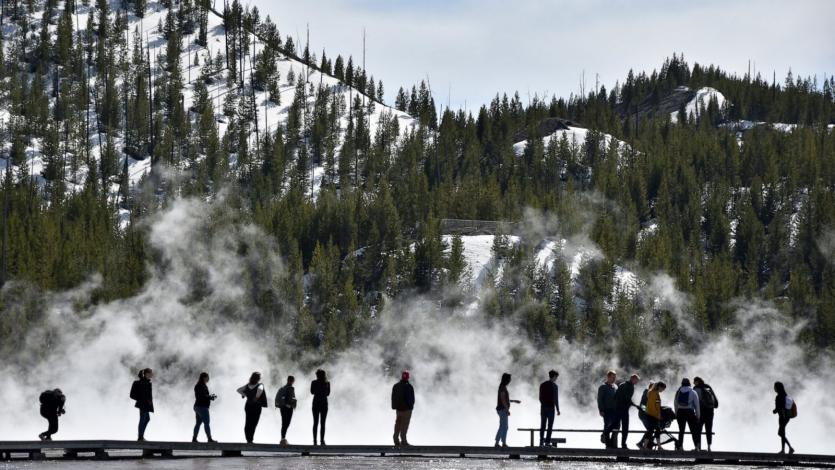Yellowstone National Park visitors are encountering warmer temperatures and less snow as climate change alters its world-renowned environment.
By Patryk Krych | The World Daily | JUNE 26th 2021
Despite its fame, Yellowstone; the oldest national park in all of the United States, has recently been revealed to be just as susceptible to the effects of climate change as the rest of the world – in a way that may affect both its wildlife and environments.
Having been established in 1872, Yellowstone is not only extremely popular, but also incredibly old – both as a volcanic land formation and a national park. Its gushing geysers, particularly ‘Old Faithful,’ alongside its population of Bisons have been the topic of both discussion and visitation for well over a century when it comes to the park. However, both of these attractions and more may be at risk, according to the report.
Dubbed the ‘Greater Yellowstone Climate Assessment,’ the report was put together by researchers at Montana State University, the US Geological Survey and the University of Wyoming. They analysed both trends in climate and Yellowstone’s ecosystems to understand the future effects that global warming may have on the Greater Yellowstone Area (GYA).
“Greater Yellowstone is valued for its forests, rivers, fish and wildlife,” said a USGS scientist and the report’s co-lead author, Steve Hostetler. “The trend towards a warmer, drier climate described in this study will likely affect ecosystems in the region and the communities that depend on them.”
The scientists had originally studied the changes that Yellowstone had undergone between 1950 and 2018 – they then used predictive models in order to fully assess how these changes may continue or spike until the end of the century, with variations largely depending on the release of greenhouse gasses.
Since 1950, the average amount of snowfall in the park had fallen by nearly a meter (two feet), and any heavier or settling snowfalls in the months of June and September have become increasingly rare – marking an already observable change in the park’s weather conditions.
“The decrease in snow is due to the increase in temperature over time, which caused more precipitation to fall as rain instead of snow,” said Bryan Shuman, a geology professor at the University of Wyoming and co-author of the study.
A particularly famed geyser by the name of Old Faithful, known for spewing up water at regular intervals, has been noted to spew less and less water over the years – most notably across periods of drought, which are growing increasingly commonplace in the park according to Shuman.
It’s not just the park, but the surrounding areas supported by the ecosystem: the GYA, that are being affected. This means that the tribes living around the regions of the national park are just as affected by the changing climate as the park’s own environments.






